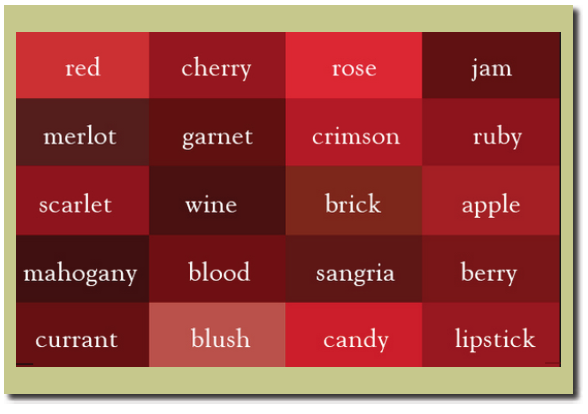Assigning Color to Pinot Noir is a Challenging Job
I have been tormented for some time about the challenging job of describing the color shades of different Pinot Noir
wines. Varying from a blush red to a deep violet color, I search for the proper term such as cherry, cardinal, crimson, scarlet,
carmine, burgundy, brick, or ruby. These are all terms used for shades of red. Usually I defer to the
description, “reddish purple,” the most suitable color description for me, but I could just as easily use the
terms brick, sangria, wine or currant. In color thesauruses I looked at, many terms are employed for different
shades of reddish violet or reddish purple.
I recently discovered some information that eased my angst. As a retired eye physician and surgeon, I probably
knew this at one time, but it had been lost in the recesses of my aging memory. The gene that allows us to see
the color red is on the X chromosome, of which men only have one. Women, who have two X chromosomes,
can see more shades of red than men. They can see crimson, cardinal, ruby and scarlet, but men only see light
red and dark red. That’s why women can discern among the multitude of shades of red lipstick.
Since becoming alert to this genetic fact, I realized that for Pinot Noir, it is more important to give a description
of the density of the wine’s color rather than a precise description of the color. That is, the use of the terms
“light, moderately light, moderate, moderately dark, or dark,” are more important than nailing the exact shade of
color.
Perhaps the best approach when meeting a lightly colored Pinot Noir is just to say, “Light Pinot Noir in color in
the glass.”



